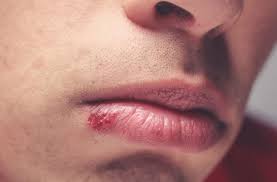Herpes simplex — more commonly known as herpes — are categorized into two types: herpes type 1 (HSV-1, or oral herpes) and herpes type 2 (HSV-2, or genital herpes). Most commonly, herpes type 1 causes sores around the mouth and lips (sometimes called fever blisters or cold sores). HSV-1 can cause genital herpes, but most cases of genital herpes are caused by herpes type 2. In HSV-2, the infected person may have sores around the genitals or rectum. Although HSV-2 sores may occur in other locations, these sores usually are found below the waist.

What Causes Herpes Infections and Outbreaks?
Herpes simplex type 1, which is transmitted through oral secretions or sores on the skin, can be spread through kissing or sharing objects such as toothbrushes or eating utensils. It is important to know that both HSV-1 and HSV-2 can be spread even if sores are not present.
For many people with the herpes, which can go through periods of being dormant, attacks (or outbreaks) can be brought on by the following conditions:
- General illness (from mild illnesses to serious conditions)
- Fatigue
- Physical or emotional stress
What Are the Symptoms of Herpes Simplex?
Symptoms of herpes simplex typically appear as a blister or as multiple blisters on or around affected areas — usually the mouth, genitals, or rectum. The blisters break, leaving tender sores.
How Is Herpes Simplex Diagnosed?
Often, the appearance of herpes simplex is typical and no testing is needed to confirm the diagnosis. If a health care provider is uncertain, herpes simplex can be diagnosed with lab tests.
How To Get Rid Of Herpes?
Check How To Stop Herpes With Just One Simple Method. If You Or Anyone You Know Is Suffering From Cold Sores. Please Watch This Video Now

